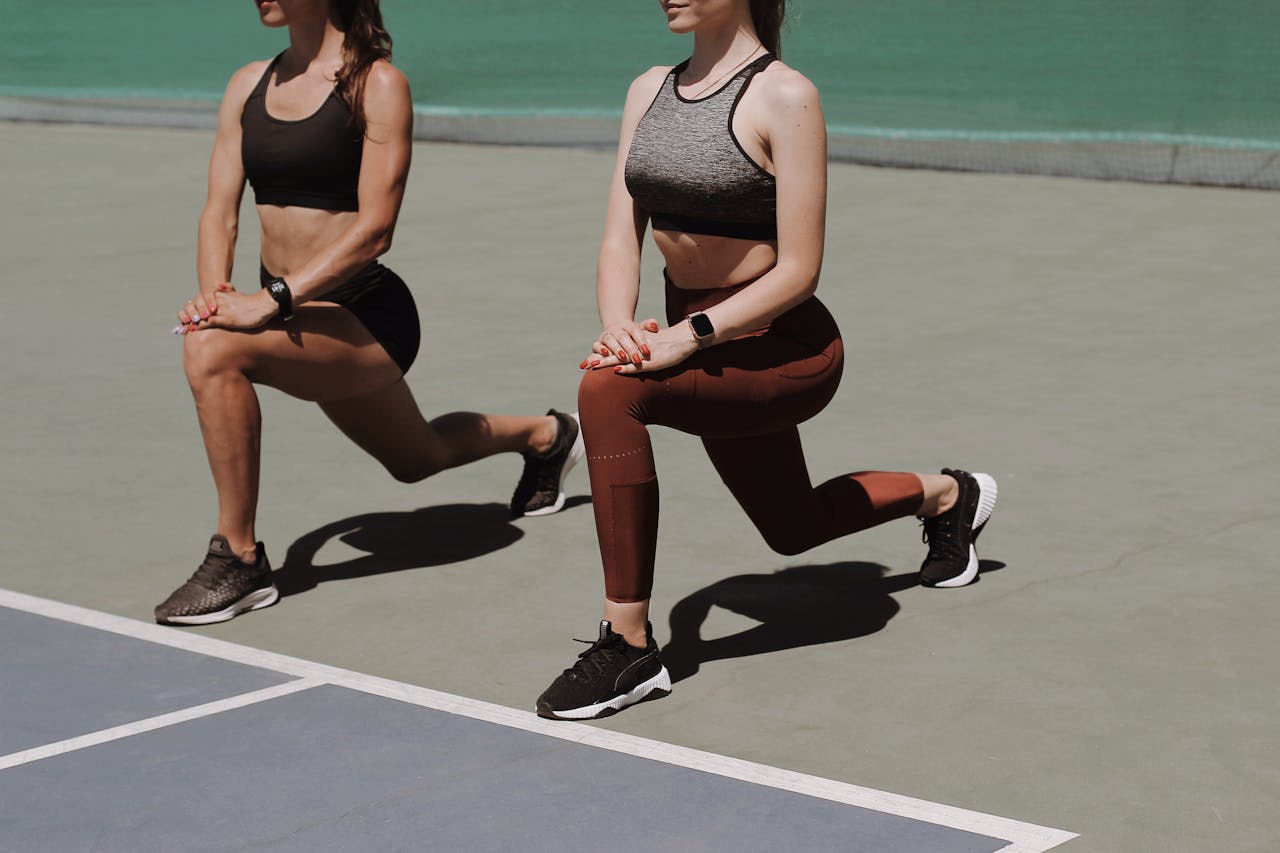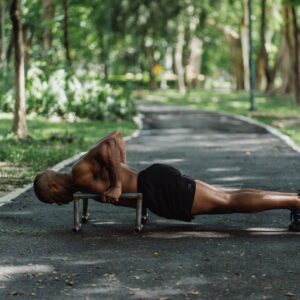Contents
Lunges are a foundational lower body exercise, ideal for building strength, balance, and flexibility. But to prevent plateaus and target muscles from different angles, it’s crucial to incorporate variations of lunges into your routine. In this article, we’ll explore five of the most effective types: Static Lunge, Walking Lunge, Curtsy Lunge, Side Lunge, and Reverse Lunge.
Whether you’re a beginner or an advanced lifter, these movements will challenge your quads, glutes, hamstrings, and core in new ways—all while improving your functional fitness.
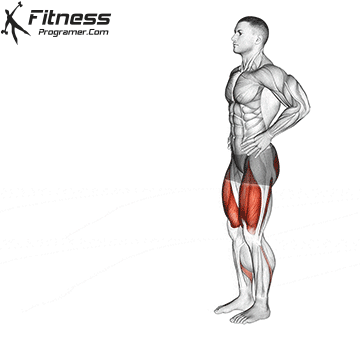
Why Lunges Matter for Strength and Stability
Lunges are unilateral exercises, meaning they work one leg at a time. This helps:
- Correct muscular imbalances
- Improve hip, knee, and ankle stability
- Increase joint mobility
- Enhance athletic performance and daily movement patterns
5 Effective Lunge Variations
1. Static Lunge
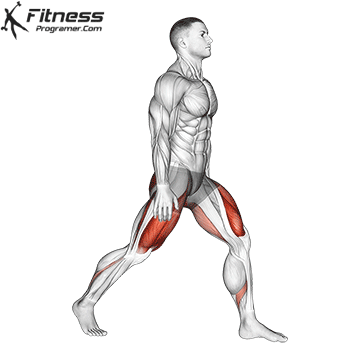
What it is: A foundational lunge where the feet stay planted in a split stance as you lower down and rise up repeatedly.
Muscles worked: Quadriceps, hamstrings, glutes, calves
Benefits:
- Great for beginners learning balance and control
- Low-impact on the knees if done with proper alignment
- Easy to modify with or without weights
How to do it:
- Step one foot forward and the other back into a split stance.
- Lower your body straight down, keeping both knees bent at 90 degrees.
- Keep your torso upright and your front knee aligned with your ankle.
- Press through your front heel to return to the starting position.
- Repeat for 8–12 reps before switching legs.
2. Walking Lunge
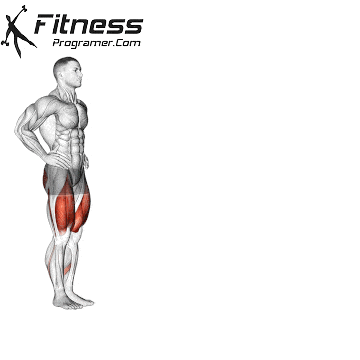
What it is: A dynamic version of the lunge that incorporates forward motion, mimicking real-life movement patterns.
Muscles worked: Quads, glutes, hamstrings, calves, core
Benefits:
- Improves coordination and balance
- Increases hip and ankle mobility
- Challenges core stability with each step
How to do it:
- Start standing with feet together.
- Step forward with one foot and lower into a lunge.
- Push off your back foot to bring it forward into the next step.
- Continue walking forward, alternating legs.
3. Curtsy Lunge
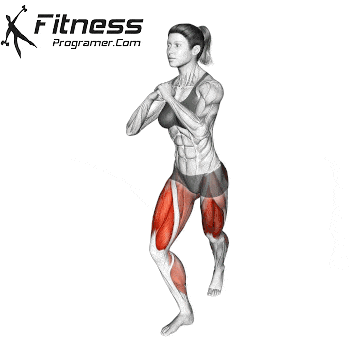
What it is: A lunge variation where the back leg crosses behind the front leg diagonally, like a curtsy.
Muscles worked: Gluteus medius, quads, adductors, hamstrings
Benefits:
- Great for targeting the glute medius, which helps stabilize the hips
- Helps prevent knee valgus (inward knee collapse)
- Adds variety to your lower-body workouts
How to do it:
- Stand tall and step your right leg diagonally behind your left.
- Lower your body into a curtsy position, keeping the front knee aligned.
- Return to standing and switch sides.
4. Side Lunge (Lateral Lunge)
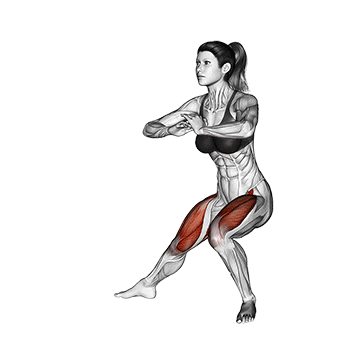
What it is: A frontal-plane movement where you step sideways instead of forward or backward.
Muscles worked: Inner thighs (adductors), glutes, quads, hamstrings
Benefits:
- Enhances lateral hip mobility
- Strengthens often-neglected inner thigh muscles
- Excellent for athletes who need lateral agility
How to do it:
- Stand with feet hip-width apart.
- Step out to the right and bend your right knee, pushing your hips back.
- Keep your left leg straight and chest lifted.
- Push off the right foot to return to start. Repeat on the other side.
5. Reverse Lunge
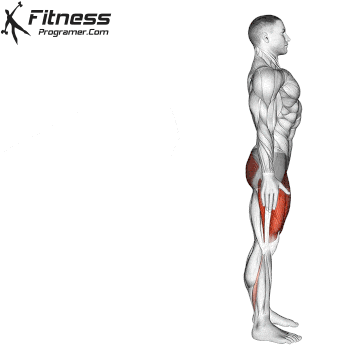
What it is: A backward step lunge that places less stress on the front knee.
Muscles worked: Quads, glutes, hamstrings, calves
Benefits:
- Easier on the knees compared to forward lunges
- Improves balance and core control
- Great for building coordination with less forward momentum
How to do it:
- Start standing with feet together.
- Step backward with your right foot and lower into a lunge.
- Keep the front knee over the ankle and chest upright.
- Push through your front heel to return to start. Repeat on the other leg.
How to Incorporate Lunge Variations Into Your Routine
For Beginners:
- Start with Static Lunges and Reverse Lunges (2–3 sets of 8–10 reps per leg).
- Focus on balance and form before progressing.
For Hypertrophy (Muscle Growth):
- Include Weighted Walking Lunges and Curtsy Lunges (3–4 sets of 10–12 reps per leg).
- Add dumbbells or a barbell for added resistance.
For Strength:
- Use moderate to heavy weights with fewer reps (3–5 sets of 6–8 reps).
- Emphasize slow, controlled movements.
For Functional or Athletic Training:
- Mix Side Lunges and Curtsy Lunges with balance drills or plyometrics.
- Perform in circuits to improve agility and coordination.
For Circuit or HIIT Workouts:
- Add 20–30 seconds of Walking or Side Lunges into a full-body circuit.
- Minimize rest to keep heart rate elevated.
For General Fitness or Mobility:
- Use a combination of all five lunge variations in a bodyweight-only routine.
- Focus on range of motion, control, and breathing.
Final Tips for Lunging Safely
- Always warm up your hips, knees, and ankles before lunging
- Keep your front knee aligned with your second toe to avoid stress
- Start with bodyweight only; add dumbbells once your form is solid
- Don’t rush—focus on control, posture, and proper depth
Conclusion
Lunge variations offer a dynamic, multi-planar approach to building leg strength, enhancing mobility, and improving movement quality. Whether you’re just starting out or you’re an experienced lifter, adding these five lunge types to your routine will help you move better, feel stronger, and train smarter.

